 The Journal of the British Astronomical Association
The Journal of the British Astronomical Association
Volume 122, No.3: 2012 June
Detailed contents: Notes and News / Articles / Observers' Forum / Reviews / Letters / Meetings / BAA Update
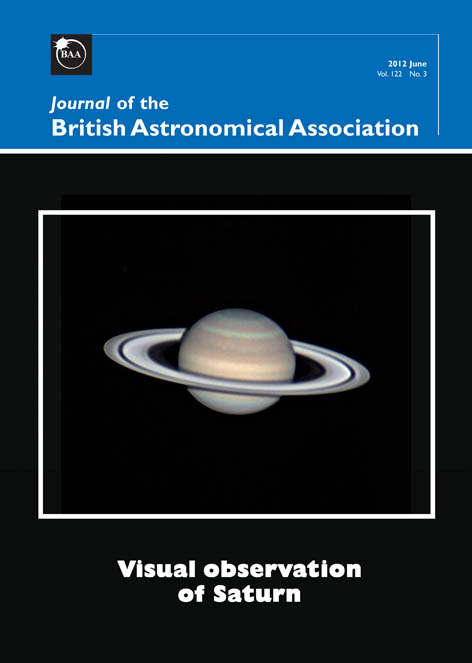

On the cover
Image of Saturn by Anthony Wesley, Murrumbateman, Australia, on 2012 May 4 at 14:31 UT. On page 149 of this issue, Paul Abel helps you get started with drawing the planet, and describes some of the features visible on it with a medium telescope.
Search for all your leisure needs at
Back to top of page Notes and News
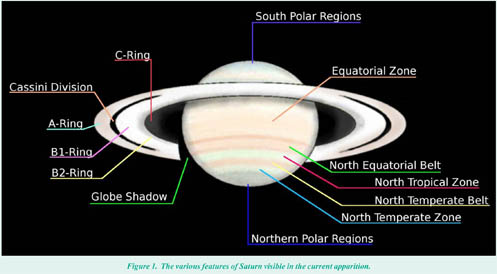
Observing basics: III
 Visual observation of Saturn ...
Paul G. Abel
Visual observation of Saturn ...
Paul G. Abel
‘Observing basics’ is a series of articles by BAA Section Directors and other experts, designed to help you get started in observing, whether you are a newcomer to astronomy or an ‘old hand’ thinking of taking up a new area of interest. Look out for further articles in the series in future issues of the BAA Journal!
Refereed papers


William Maximilian Lindley: Fifth Director of the BAA Variable Star Section ... Jeremy Shears
Short paper: Modifying DSLR cameras for astrophotography ... Tony Morris
Short paper: Fireballs over Iceland ... Thorsteinn Saemundsson
Short paper: PV Cephei and Gyulbudaghian’s Nebula ... David Boyd
Learning from Galileo’s errors ... Enrico Bernieri
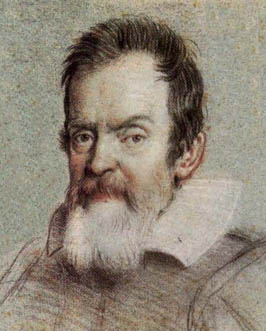
What’s in a name? – ‘Webb’s Furrow’ and a minor correction to Our Moon by H. P. Wilkins ... Nigel Longshaw
Reviews
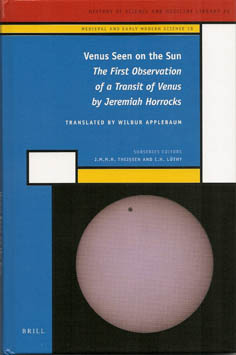
![]()
Brill History of Science & Medicine Library, 2012. ISBN 978-90042-21932, Pp. xxiv + 82, £85.54 (hbk).
 Reviewed
by David Sellers
Reviewed
by David Sellers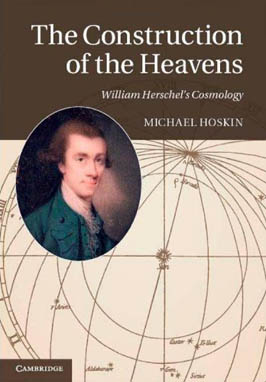
![]()
Cambridge University Press, 2012. ISBN 978-1-107-01838-9. Pp viii + 205, £65 (hbk).
 Reviewed
by Mike Frost
Reviewed
by Mike Frost
CLICK HERE to read scores more authoritative book reviews from the BAA Journal


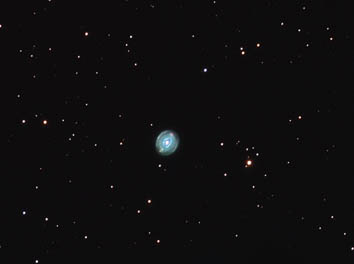

 Observers' Forum
Observers' Forum
BAA Update
 Light pollution & planning controls: a CfDS conference at Leicester DMU
Light pollution & planning controls: a CfDS conference at Leicester DMU
Meetings
 Ordinary Meeting & Christmas Lecture, 2011 December 10
Ordinary Meeting & Christmas Lecture, 2011 December 10
Letters
 Sky notes for 2012 June & July by Callum Potter
Sky notes for 2012 June & July by Callum Potter